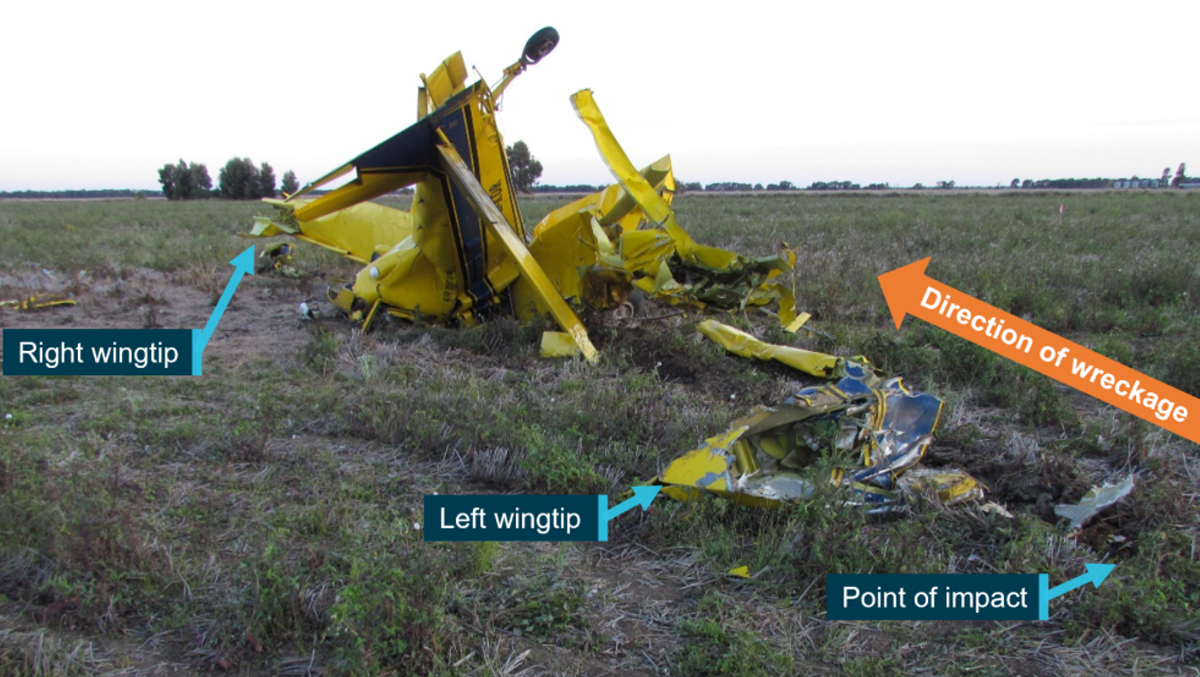An ATSB investigation into the fatal crash of a spraying aircraft has found evidence that a large Australian bustard smashed through the cockpit window in the lead-up to the accident.
An unidentified man in his 30s died in September when his Air Tractor AT-502B hit the ground near Chinchilla on Queensland’s Western Downs.
It comes months after it was revealed a wedge-tailed eagle was likely behind a separate crash that killed a pilot in Sydney in July. The investigation is only at the preliminary stage, with a final report set to be published later.
The organisation’s director of transport safety, Dr Stuart Godley, said, “Should a critical safety issue be identified during the course of the investigation, the ATSB will immediately notify relevant parties so appropriate and timely safety action can be taken.”
The early report details how the Air Tractor AT-502B, VH-KDR, had been conducting spray runs on the morning of 19 September 2022.
Around 1200, the loader at the private airstrip about 24 NM (44 km) southeast of Chinchilla from where the Air Tractor had been operating attempted to call the pilot to ask whether they needed more fuel.
Concerned with having received no response, the loader phoned the operations manager, who in turn contacted nearby farmers to assist with locating the aircraft.
At about 1215, a local farmer found the aircraft in the paddock where the pilot had been spraying. The pilot was killed, and the aircraft was destroyed.
“An ATSB examination of the accident site found that the aircraft had impacted terrain with the fuselage in a near vertical attitude, with its propeller and engine buried in the soft earth, and the wreckage contained to a small area,” said Dr Godley.
Ground scars and damage to the left wing indicated that the wing struck the ground at about 30° to the horizontal, and examination of the propeller and engine indicated that the engine was delivering power at the time of the impact.
There was no post-impact fire.
“A large bird carcass was found in the cockpit, and the bird’s wings were located about 300m north of the wreckage, in-line with the aircraft’s track,” said Dr Godley.
Biological residue from the bird was found outside the right cockpit window.
“At the request of the ATSB, the Australian Centre for Wildlife Genomics at the Australian Museum analysed biological specimens of the bird, identifying them as being from an Ardeotis australis, commonly known as an Australian bustard or Plains turkey.”
The Australian bustard is a large bird, 80 to 120 cm in height, with an average weight for an adult of 4.5kg, with males weighing up to 8kg. They are capable of flying but are mostly ground-dwelling.
“The aircraft operator advised that for the field where the accident occurred, they expected that it would be sprayed at a height of about 2m (6ft) above the ground, to be just above the weeds.”
Dr Godley noted that the investigation is continuing, and will include research into the nature of birdstrikes and similar occurrences.
“Bird strikes resulting in fatal aircraft accidents are very rare. However, the ATSB is currently investigating a separate accident where a wedge-tailed eagle bird carcass was located near the accident site of a Bell LongRanger helicopter, which experienced an in-flight break-up near Maroota, New South Wales on 9 July 2022.”
The ATSB said its continuing investigation into the Chinchilla accident would include further review and examination of electronic components recovered from the accident site, operational documentation and maintenance records.
















